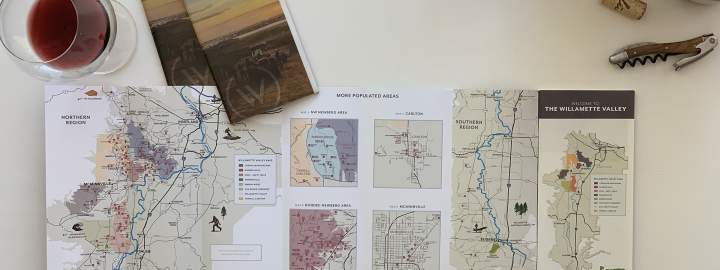About The Valley
The Willamette Valley, home to more than two-thirds of Oregon’s wineries and vineyards, is the cradle of the state’s modern wine industry and one of the world’s leading regions for Pinot noir. Its reputation is built on sixty years of vision, experimentation, and collaboration.
The region’s modern history began in the 1960's, when a small group of pioneering winemakers arrived with a bold belief: that the Willamette Valley’s cool climate and ancient volcanic and sedimentary soils could produce world-class Pinot noir to rival the best of Burgundy. The early families, such as the Letts, Eraths, Adelsheims, Ponzis, and others, planted the first Pinot noir and Chardonnay vines, often against the advice of experts who doubted fine wine could be grown here. Their success helped define a new frontier in American wine.
Through the 1970s and 1980s, winemaking families worked collectively to build quality standards, share knowledge, and advocate for truth in labeling. Their efforts contributed to the establishment of the Willamette Valley AVA in 1983,, Oregon’s first American Viticultural Area. Over the decades, the region continued to grow in reputation, earning acclaim internationally for wines that express elegance, balance, and a strong sense of place.
Today, the Willamette Valley is a vast and varied appellation encompassing eleven nested AVAs: Chehalem Mountains, Dundee Hills, Eola-Amity Hills, Laurelwood District, Lower Long Tom, McMinnville, Mount Pisgah (Polk County, Oregon), Ribbon Ridge, Tualatin Hills, Van Duzer Corridor, and Yamhill-Carlton. Each reflects distinct soil types, elevations, and microclimates shaped by millennia of volcanic activity, marine sedimentation, and the Missoula Floods—creating unparalleled diversity within a single region.
At its widest point, the valley stretches sixty miles, following the Willamette River for more than a hundred miles from Portland to Eugene. The Coast Range protects the area from cold Pacific storms, while the Cascades shield it from the arid climates to the east. These natural boundaries create a long growing season defined by warm days, cool nights, gentle autumns, and mild winters—ideal conditions for Pinot noir and other cool-climate varieties.
While Pinot noir remains the valley’s hallmark, wineries also craft expressive still and sparkling wines from Chardonnay, Pinot gris, Gamay, Riesling and other emerging varieties.
The Willamette Valley has also evolved into a beloved wine tourism destination. Visitors are drawn to its luxury resort, boutique inns and bed & breakfasts, exceptional dining, and scenic countryside. With wineries located just minutes from Portland, Salem and Eugene, and no more than two hours from each city, the region offers remarkable accessibility alongside world-class hospitality.











